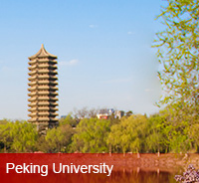Prof. Justin Lin: Medical Reforms Lag Behind Economic Growth
Jan 12-2021
To a large extent, people’s health is correlated with income levels and medical systems, said Prof. Justin Lin Yifu, Honorary Dean of the NSD, in a recent event co-organized by Princeton University Press, China Newsweek, and two schools of Peking University: The Institute of New Structural Economics and the NSD.
The event was also attended by Anne Case, a member of the US National Academy of Sciences, and Angus Deaton, 2015 Nobel Laureate in economics and a professor of Princeton University. They spoke on the relationship between economic development, medical system, and citizens’ health. Prof. Lin is also the Dean of the Institute of New Structural Economics and the Institute of South-South Cooperation and Development at PKU.
Prof. Lin used average life expectancy as a yardstick to measure the progress of China’s medical system in two periods: 1949-1978, and 1978-2019. The first period was characterized by poor economic development on one hand and miraculous improvement in people’s health on the other. China’s GDP per capita was a meagre USD156 in 1978, barely a third of that of sub-Sahara countries, but its average life expectancy had shot up from 35 to 65.9 in that span. The accomplishment was attributable to an exceptionally effective medical system covering cities and villages alike. While urban residents had accessed to free medical care, the rural ones were taken care of by a three-tiered system extending from counties to towns and further to villages.
In the second period, an economic miracle was pulled off thanks to the reform and opening-up, yet medical reforms barely delivered their intended results. Despite annual GDP growth of 8.4%, average life expectancy only rose from 65.9 in 1978 to 76.7 in 2018, again smaller than that achieved by other middle-income countries at far slower economic growth rate. The market-oriented medical reforms resulted in both urban and rural residents having to pay higher medical bills on their own. Hospitals, only receiving 10% of its funding from the government, functioned by selling medicines at high margins. Some doctors took bribes. A vast amount of medical resources was wasted as small hospitals were trapped in the vicious cycle of losing good doctors and then patients to large hospitals.
Of the various pilot reforms carried out locally, the one in Sanming City, Fujian Province had notable success in substantially reducing patients’ medical bills, increasing income of medical staff, and maintaining fiscal outlay at the previous level. The national medical system has taken the cue and moved in the same direction.
Information asymmetry abounds between patients and doctors and with it come moral hazards. Therefore, the government should play an active and effective role and beware of vested interests. Prof. Lin hoped that China’s medical reforms will accomplish as much as the economic ones so that the goals laid out in the Healthy China strategy will be achieved and contributions be made to the wellbeing of people around the world.







